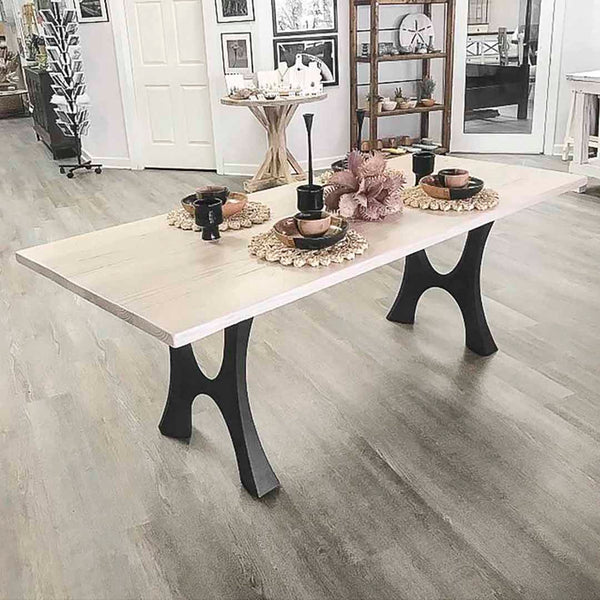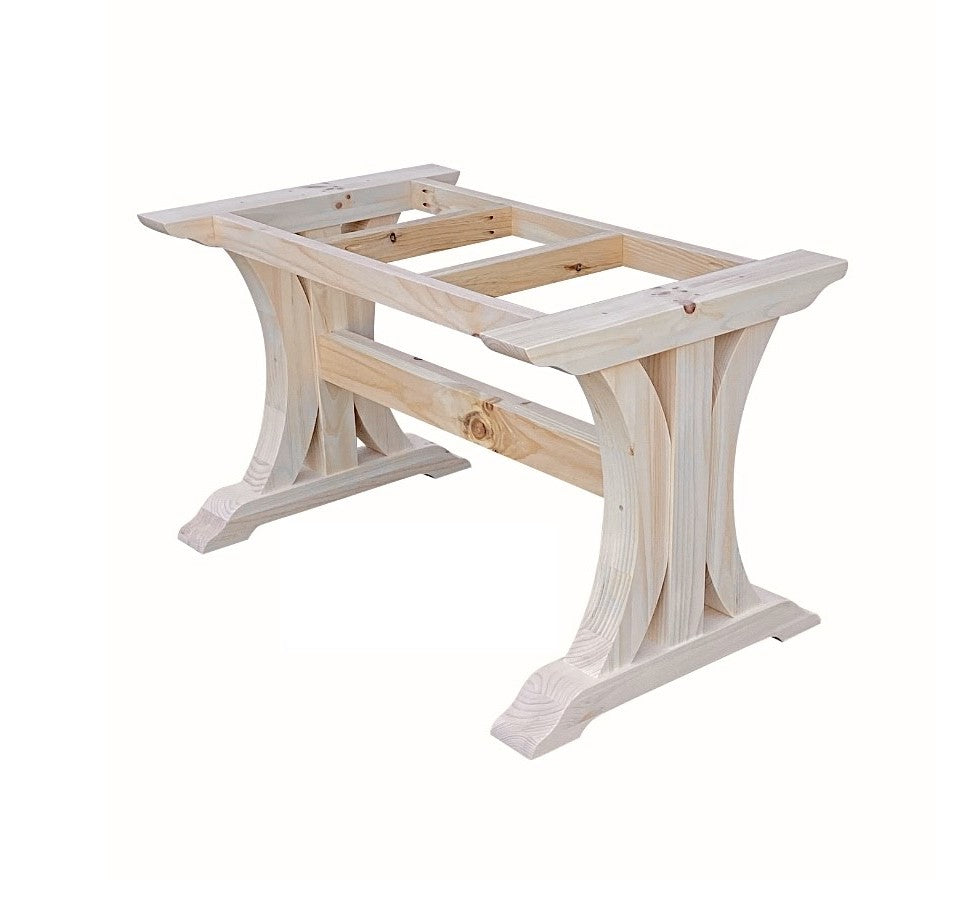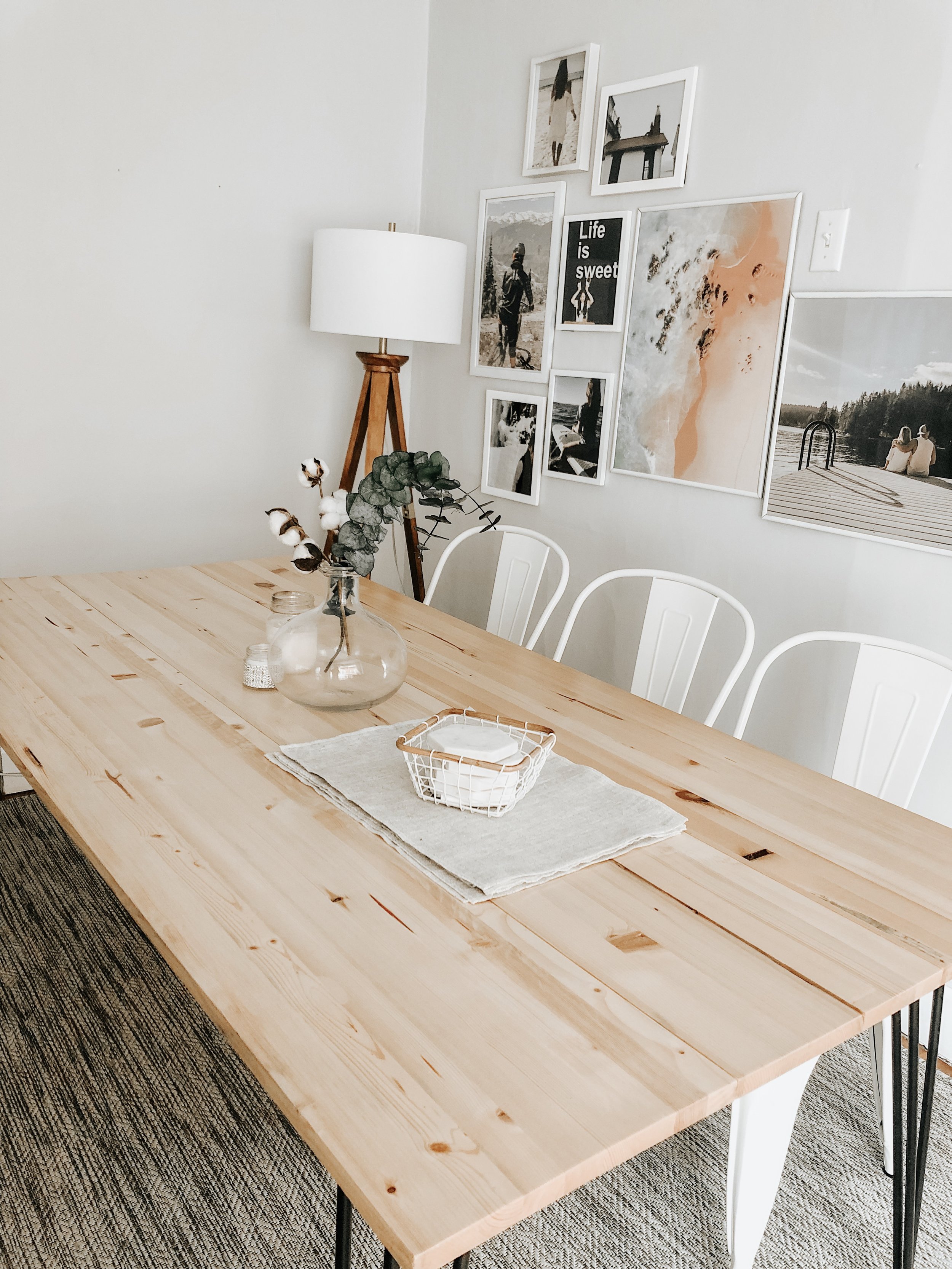Upgrade Your Furniture with Custom Dining Room Table Legs
Upgrade Your Furniture with Custom Dining Room Table Legs
Blog Article
Professional Tips for Installing Dining-room Table Legs for Optimum Security
When it comes to installing eating room table legs, achieving optimum security is extremely important for both performance and appearances. What specific techniques can boost stability even better?
Choose the Right Legs
When selecting the suitable legs for your eating room table, it is vital to think about both performance and aesthetic appeals. The legs you pick will significantly impact the overall layout and security of the table. Initially, assess the table's meant usage; if you expect regular celebrations, tougher legs, such as those made from strong timber or steel, might be preferable, as they use raised sturdiness and assistance.
Typical dining tables usually range from 28 to 30 inches in height, so make sure the legs straighten with this standard for convenience. Tapered legs can add a contemporary touch, while turned legs may share an extra classic aesthetic.

Select Appropriate Hardware
How can the right hardware enhance the stability and durability of your dining area table? The choice of appropriate equipment is critical to making sure that the legs of your table are securely attached and able to hold up against normal usage. Premium screws, bolts, and brackets supply the required strength to sustain the weight of the table, as well as any type of extra loads placed upon it throughout celebrations or dishes.
When picking screws, select those made from sturdy materials such as stainless steel or brass, which withstand deterioration and preserve stability in time. The size of the screws is just as essential; they ought to permeate deeply into the table's framework without jeopardizing stability. For bolted links, consider utilizing lock washing machines to avoid loosening up due to resonance or activity.
Additionally, making use of corner brackets can include additional support, specifically for larger tables or those with larger tops. These braces distribute weight evenly and help keep the table's shape. Making sure that the hardware you select is proper for the specific products of your table will even more improve its general stability and longevity, permitting you to enjoy your eating experience for several years to come.
Ensure Correct Positioning
Correct positioning of dining-room table legs is crucial for both aesthetic appeal and practical security. Misaligned legs can cause an uneven table top, which might not only be aesthetically uninviting however likewise compromise the table's use. To accomplish ideal positioning, begin by gauging the distance from the table's edges to the leg accessory points. This ensures that each leg is located equidistant from the sides, developing a balanced appearance.
Utilize a level throughout installation to verify that each leg view it is perpendicular to the tabletop. It is advisable to mark the preferred leg settings on the bottom of the table with a pencil or concealing tape prior to safeguarding them.
In addition, verify the positioning after the preliminary screws are tightened up, as changes may be essential before totally protecting the equipment. By focusing on correct placement, you not just enhance the table's overall style but additionally make certain that it stays functional and stable for many years to come.

Think About Weight Distribution
After making certain appropriate placement of the dining-room table legs, it is essential to consider weight circulation to boost stability and capability. dining room table legs. Correct weight distribution is important in protecting against tottering and ensuring that the table can sustain its designated load without threat of tipping or falling down
When placing the legs, guarantee they are positioned at equivalent ranges from the facility of the table to equally distribute the weight across the structure. Think about the weight of the table top and any type of products that will regularly hinge on it, such as attractive pieces or tabletop home appliances. Tables with much heavier surface areas ought to preferably have legs located closer to the edges, as this takes full advantage of the base of assistance and reduces the threat of instability.
Furthermore, if the table is intended for usage in a high-traffic area, consider utilizing much heavier products for the legs or adding maintaining aspects, such as cross-bracing or a reduced shelf - dining room table legs. These modifications can help preserve equilibrium and stop moving during use. Ultimately, a well-considered weight distribution technique will significantly boost the table's total performance, ensuring it stays a practical and appealing focal point for your eating room
Test Security Prior To Usage
Testing the stability of the dining room table prior to usage is a crucial step that needs to not be overlooked. If the table reveals instability, recognize the legs or joints that might need change.
Following, check that all bolts and screws are tightened up effectively. look at here Loosened links can cause instability and potential damages with time. If essential, use timber adhesive on joints to enhance stability, ensuring to permit appropriate drying out time.

Verdict
Finally, the setup of dining space table legs calls for cautious consideration of products, positioning, equipment, and weight circulation to accomplish optimum stability. By picking sturdy legs and premium bolts, making sure specific placement, and distributing weight evenly, the architectural integrity of the table can be considerably improved. Carrying out a security examination prior to normal use further makes sure that the table will certainly withstand daily stress, consequently giving a safe and reputable dining experience.
When it comes to installing eating area table legs, attaining optimum stability is paramount for both capability and aesthetic appeals. The legs you pick will dramatically influence the total layout and security of the table (dining room table legs). Conventional dining tables usually vary from 28 to 30 my review here inches in elevation, so make certain the legs line up with this standard for convenience.Appropriate placement of dining room table legs is necessary for both aesthetic charm and functional stability.In final thought, the installation of dining area table legs calls for mindful factor to consider of materials, hardware, positioning, and weight circulation to achieve optimum stability
Report this page